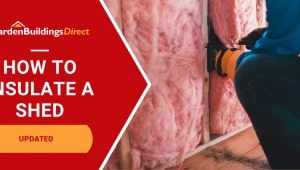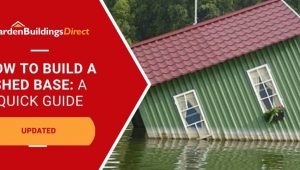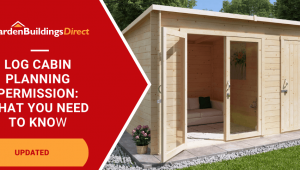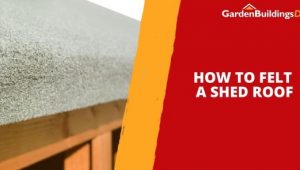Jump to:
A shed needs a good base, and that often means digging, but not in every case. Sometimes you just can’t—the ground might be too tough, the area too large, or your back might say no chance. No need to stress, though; you can still build shed foundations without digging. This guide will walk you through the options.
If you haven’t bought your new shed yet, it’s worth checking out our shed buying guide to make sure you choose the right type and size of shed for your garden.
3 Methods for Building Shed Foundations Without Digging
Here are some ways that work when you’d rather skip the shovel.
Gravel pad + skids (floating foundation)
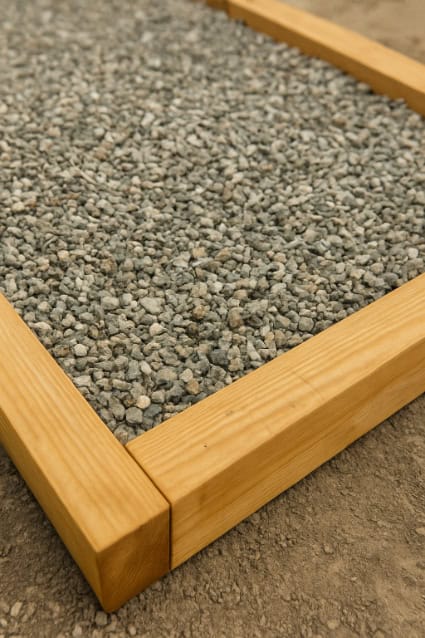
For this setup, you’re basically creating a flat bed of gravel, then resting treated timbers on top.
- Mark out the size of your shed with string or timber so you know exactly where your gravel will go. Set up the frame with treated wood, landscape timbers, or concrete blocks. Doing so will also stop the gravel from spreading out over time.
- Roll out the geotextile fabric before tipping the stones in. Its purpose is to stop weeds from pushing up and to keep the gravel from sinking into the soil.
- Use ¾” clean gravel or crushed stone. You want sharp pieces, not smooth pea gravel. Pour it in a few inches at a time, then tamp it down. If you don’t own a compactor, a hand tamper or a heavy board will do. Don’t skip this, as compacting is what makes the base solid!
- Now you can set your skids or sleepers (pressure-treated timbers) that run the full length of your shed. Lay them on top of the gravel and check for level. If one end is low, slide in more gravel under it. If it’s too high, scrape some out.
Once the skids are level, you’re ready to put your shed down. For windy areas or taller sheds, anchor the shed to the skids with brackets or straps.
Concrete blocks or pier blocks (no trenching)
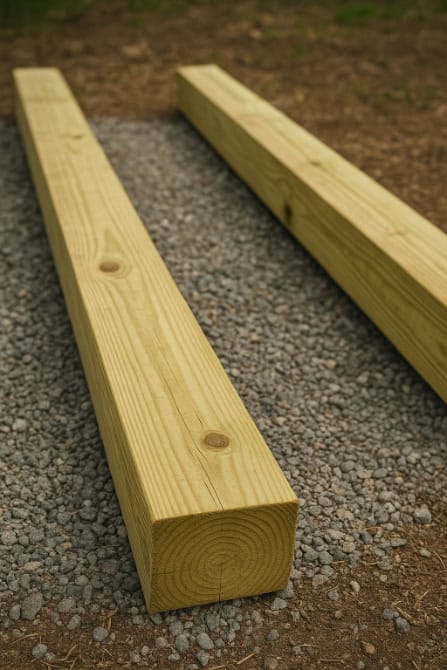
This one might be your best option if you don’t want to shift loads of soil. You’re using precast blocks or pier pads as the main support, and all you need is a firm surface underneath them.
- The corners are where most of the weight from your shed will sit. Place a block under each corner on compacted soil or, even better, on a small bed of gravel.
- Don’t leave the middle hanging if you have a log shed. Add extra blocks along the sides so the floor joists don’t sag. It’s like a table. You wouldn’t build one with only legs at the corners if it were going to hold heavy stuff.
- Take your time for this step. Level is the tricky part, and rarely will all your blocks line up on the first go. That’s where shims, wedges, or small flat stones come in. Slip them under a block until your beam sits flat and level.
After the blocks are set, run your beams or floor joists across them. Check again for the level before fixing anything.
Tip: Use wider pier pads if your shed sits on soft ground or in a wet area. They spread the weight better and help stop the shed from sinking.
Also, try to avoid overly tall blocks which could significantly push up the total height of your shed, otherwise you’re likely to encroach upon the height limits outlined in the shed planning permission rules.
Skid/runner only (minimal prep)
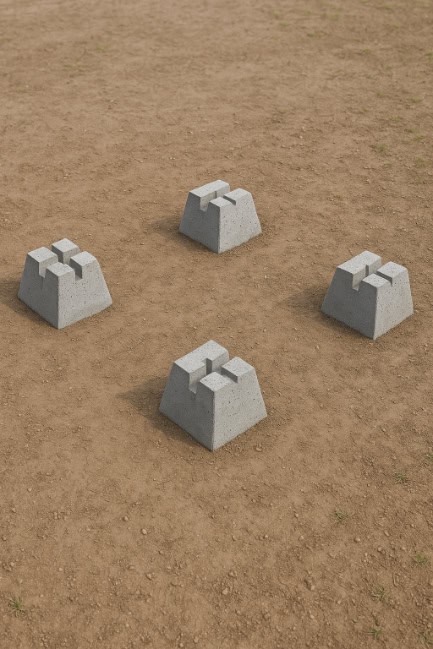
This is the fastest way to get a shed standing without much groundwork. You only need long, pressure-treated timbers, also known as skids or runners. They sit on the ground or on a bed of gravel, and the shed floor sits on top of them.
- The ground has to be fairly level for this to work. Check your site with a long board and a level before you start.
- Lay the skids in the direction you want your shed floor joists to run. Most sheds do well with two skids for shorter sizes, but go for three or more if the shed is longer. The more support, the less chance of the floor sagging.
- Because the skids sit right on the surface, they’ll sink slightly over time. Slow this down by putting a strip of gravel under each one. Pack the gravel, then place the timber on top of it. If a section still feels soft, backfill more gravel under that spot.
- Use a small jack, wood shims, or flat stones to level the skids under low spots. Adjust each skid until they line up.
This method won’t give you a perfect foundation that lasts forever, but it’s strong enough for lighter sheds. It also makes it easier to move the structure later if you change your mind about where it sits.
When “No-Dig” Still Needs Light Digging
Sometimes the ground won’t sit right for a shed base. You might have thick grass, soft soil, or a high spot that gets in the way.
What you can do is to scrape off the turf so it doesn’t rot under the shed. Use a hoe, flat shovel, or pry bar to knock down raised areas. Don’t dig deep; just shave enough for the blocks, skids, or timbers to sit flat.
It takes a few minutes, but it’s still far easier than digging full trenches. If you ever need to dig, refer to this guide on how to build a shed base.
